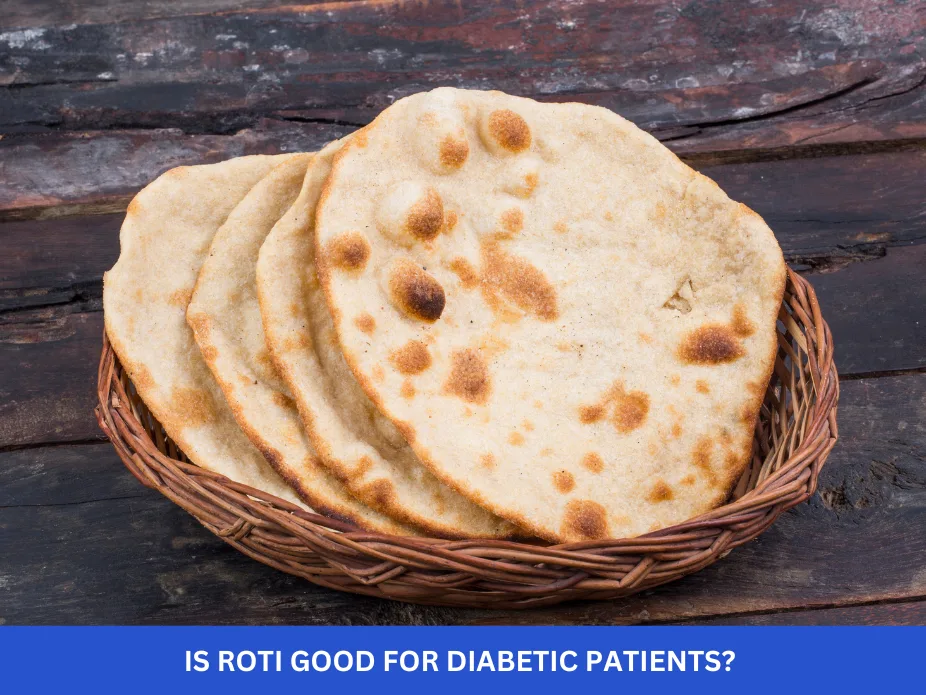Gallstones can be a painful and disruptive condition that affects the gallbladder, a small organ beneath the liver. They develop when substances like cholesterol or bilirubin form hard particles that can block the normal flow of bile. While conventional treatment often involves surgery, many people seek alternative options like homeopathy for relief. This article explores homeopathic remedies for gallstones, their effectiveness, and when to consider medical intervention.
What are Gallstones?
Gallstones are hardened deposits of digestive fluid that can form in the gallbladder. The gallbladder is a small, pear-shaped organ located under your liver. It stores and releases bile, a digestive fluid produced by the liver, into the small intestine to help digest fats. Gallstones can vary in size from as small as a grain of sand to as large as a golf ball. They can develop due to an imbalance in the substances that make up bile, which includes cholesterol, bile salts, and bilirubin.
There are two main types of gallstones:
1. Cholesterol Stones: These are usually yellow-green and are the most common type, accounting for about 80% of gallstones.
2.Pigment Stones: These are smaller and darker and made up of bilirubin. They are more common in people with certain medical conditions, such as cirrhosis, biliary tract infections, and hereditary blood disorders like sickle cell anemia.
Common Symptoms of Gallstones
Gallstones may not always cause symptoms. When they do, the most common symptoms include:
1.Pain
The most prevalent symptom of gallstones is pain, often referred to as biliary colic. This pain typically occurs in the upper right quadrant of the abdomen, just below the ribs. It can be sudden and intense, ranging from a dull ache to a sharp, stabbing sensation. The pain may also spread to the back or the right shoulder blade. This type of pain can last from a few minutes to several hours. It often occurs after eating a large or fatty meal because the gallbladder contracts to release bile, which can aggravate the gallstones.
2.Nausea and Vomiting
Nausea and vomiting frequently accompany the abdominal pain caused by gallstones. These symptoms are a result of the body’s response to the pain and the blockage in the bile ducts. The nausea can be persistent, making it difficult to eat or drink, and vomiting may occur in severe cases. This can lead to dehydration and further complications if not managed properly.
3.Fever
A fever can be a sign of an infection in the gallbladder (cholecystitis) or bile ducts (cholangitis). This is a serious complication that requires immediate medical attention. The fever may be accompanied by chills and sweating, indicating that the body is fighting off an infection. A high fever combined with severe abdominal pain is a red flag for a possible infection or other severe complication.
4.Jaundice
Jaundice is the yellowing of the skin and the whites of the eyes. It occurs when a gallstone lodges in a bile duct and blocks the normal flow of bile from the liver into the small intestine. This causes bile to back up into the liver and then into the bloodstream, leading to a buildup of bilirubin, the yellow pigment in bile. Jaundice is often accompanied by dark urine and pale stools, which are also signs of bile duct obstruction.
5.Changes in Stool Color
Gallstones can affect the color of both urine and stools. The urine may become darker, resembling tea or cola, due to the increased levels of bilirubin in the blood. Stools may become lighter in color, often described as clay-colored, because bile is not reaching the intestines to aid in digestion. These changes are indicative of a blockage in the bile ducts, preventing bile from being excreted normally.
Causes of Gallstones
Several factors contribute to the formation of gallstones:
1.Excess Cholesterol in Bile:
Normally, bile contains enough chemicals to dissolve the cholesterol excreted by your liver. But if your liver excretes more cholesterol than your bile can dissolve, the excess cholesterol may form crystals and eventually stones.
2.Imbalance in Bile Salts or Bilirubin:
These substances are crucial for dissolving cholesterol. If there is an imbalance, it can lead to stone formation.
3.Gallbladder Not Emptying Correctly:
If your gallbladder doesn’t empty completely or often enough, bile may become overly concentrated, contributing to the formation of gallstones.
4.Genetic Factors:
Family history can play a role in the development of gallstones. If your parents or siblings have had gallstones, you may be at higher risk.
5.Obesity:
Being overweight increases the amount of cholesterol in bile, which can lead to stone formation. Obesity is a significant risk factor for gallstones, particularly in women.
6.Rapid Weight Loss:
Losing weight too quickly can cause the liver to secrete extra cholesterol into bile, raising the risk of gallstones. This is often seen in people who undergo crash diets or bariatric surgery.
Diagnosis of Gallstones
Doctors typically diagnose gallstones through several methods:
1.Ultrasound:
This is the most common test used to diagnose gallstones. It uses sound waves to create images of the gallbladder and can detect the presence of stones.
2.Blood Tests:
These tests check for signs of infection, inflammation, or obstruction. They can help determine if gallstones are causing a blockage in the bile ducts or if there are complications like pancreatitis.
3.CT Scan or MRI:
These imaging tests provide detailed images of the gallbladder and bile ducts. They are used if an ultrasound doesn’t provide enough information or if the doctor needs to see more detail.
4.HIDA Scan:
This test tracks the production and flow of bile from the liver to the small intestine and can show if there is an obstruction in the bile ducts.
5.Endoscopic Retrograde Cholangiopancreatography (ERCP):
This is both a diagnostic and therapeutic procedure. It involves inserting an endoscope through the mouth, esophagus, and stomach into the bile ducts. It can be used to find and remove stones.
15 Homeopathic Medicines for Gallstones
Homeopathy offers various remedies that may help alleviate symptoms associated with gallstones. It’s essential to consult with a qualified homeopath to determine the most suitable treatment based on individual symptoms and constitution. Here are some commonly used remedies:
1.Chelidonium:
Often used for right-sided abdominal pain and jaundice. It is particularly effective for people who experience pain radiating to the back or right shoulder blade.
2.Lycopodium:
Useful for people who feel bloated and full after eating even a small amount of food. It helps with gas and flatulence, especially if the pain is more on the right side of the abdomen.
3.Nux Vomica:
Best for those who suffer from nausea, vomiting, and irritability. It’s often used for people who overindulge in food and alcohol.
4.Pulsatilla:
Suitable for individuals with indigestion, especially when symptoms change frequently. It’s helpful for people who feel better in the open air and worse in warm rooms.
5.Belladonna:
Ideal for sudden, intense pain that comes and goes. It’s particularly useful when the pain is sharp and the abdomen is sensitive to touch.
6.China Officinalis:
Recommended for bloating and discomfort after eating fatty foods. It’s particularly useful for people who feel weak and exhausted.
7.Berberis Vulgaris:
Known for its effectiveness in relieving radiating pain from the gallbladder to the back and shoulders. It’s also useful for kidney stones.
8.Calcarea Carbonica:
Often prescribed for people who feel cold, sluggish, and fatigued. It’s useful for those with a tendency to form gallstones due to a sluggish metabolism.
9.Colocynthis:
Best for cramping pains that improve with pressure and warmth. It’s particularly effective for people who feel relief by bending double or lying on their abdomen.
10.Magnesia Phosphorica:
Useful for spasmodic pains relieved by warmth. It’s particularly helpful for people who find relief from hot compresses or warm baths.
11.Podophyllum:
Recommended for people who experience pain with diarrhea and gas. It’s particularly useful for people who have a history of liver and gallbladder problems.
12.Phosphorus:
Best for burning pain and sensitivity to touch. It’s useful for individuals who crave cold drinks and feel worse in the evenings.
13.Sulphur:
Ideal for people with burning sensations and irritability. It’s particularly effective for those who feel worse from standing and better from lying down.
14.Arsenicum Album:
Recommended for burning pain relieved by warmth and hot drinks. It’s particularly useful for people who feel anxious and restless.
15.Taraxacum:
Known for its support of liver and gallbladder function. It’s useful for people who experience liver and digestive issues.
When to See a Doctor
While homeopathic remedies can offer relief, it’s crucial to seek medical attention if you experience:
- Severe Abdominal Pain: Especially if it is sudden and intense, as this could indicate a serious problem.
- Fever and Chills: These can be signs of an infection, which requires prompt medical treatment.
- Yellowing of the Skin or Eyes: This could indicate a blockage in the bile ducts, which needs immediate attention.
- Persistent Nausea and Vomiting: These symptoms can lead to dehydration and other complications.
These could indicate complications like inflammation, infection, or blockage of the bile ducts, which require immediate medical intervention.
Real-Life Scenario
Consider Priya, a 42-year-old experiencing intermittent abdominal pain and nausea after meals. After routine scans, she was diagnosed with gallstones. Rather than immediately opting for surgery, she explored homeopathic remedies that focused on her specific symptoms, diet, and lifestyle. Over several months, Priya noticed reduced pain frequency and improved digestion, highlighting how a personalized approach can complement conventional care.
Expert Contribution
Dr. R. Mehta, a certified homeopath with over 15 years of experience, emphasizes that gallstone treatment in homeopathy is never “one-size-fits-all.” Remedies are selected based on symptom patterns, emotional state, and digestive tendencies. Commonly prescribed medicines include Chelidonium majus, Carduus marianus, and China officinalis, each chosen for specific manifestations such as right-sided abdominal pain, digestive sluggishness, or bloating. Experts stress that homeopathy works best alongside lifestyle modifications, including a balanced diet and hydration.
Recommendations Grounded in Proven Research and Facts
- Consult a qualified homeopath: Self-prescription can be ineffective or harmful.
- Combine with dietary care: Avoid excessive fatty foods and increase fiber intake.
- Monitor symptoms regularly: Persistent pain or jaundice requires immediate medical evaluation.
- Integrative approach: Homeopathy can complement conventional treatments, but severe cases of gallstones may still require surgical intervention.
- Evidence-based practices: Studies indicate that homeopathic remedies may help reduce discomfort and improve digestive function, but results vary individually.
FAQ on Homeopathic Medicine for Gallstones
Q: Can homeopathy dissolve gallstones?
A: Homeopathic remedies aim to alleviate symptoms rather than dissolve gallstones. Some practitioners believe that certain remedies can help reduce the size of gallstones or prevent new ones from forming, but there is no scientific evidence to support this. Surgical intervention is often necessary for large or symptomatic stones.
Q: Are homeopathic remedies safe?
A: When prescribed by a qualified homeopath, remedies are generally safe. However, individual responses may vary, and it’s essential to monitor symptoms closely. Always inform your healthcare provider about any homeopathic treatments you are using, especially if you are also receiving conventional medical treatment.
Q: How long does it take for homeopathic remedies to work?
A: The time frame varies depending on the individual and the severity of symptoms. Some people may experience relief within hours to days, while others may require longer treatment. Consistency and proper follow-up with a homeopath are crucial for effective results.
Q: Can diet help manage gallstones?
A: Yes, maintaining a healthy diet low in fat and cholesterol and high in fiber may help manage symptoms and reduce the risk of gallstone formation. Foods that are particularly beneficial include fruits, vegetables, whole grains, and lean proteins. Avoiding fatty, fried, and processed foods can also help.
Q: What lifestyle changes can help prevent gallstones?
A: In addition to a healthy diet, regular exercise, maintaining a healthy weight, and gradual weight loss can help prevent gallstones. Drinking plenty of water and avoiding rapid weight loss diets are also important preventive measures.
Q: Can homeopathy be used alongside conventional treatments?
A: Homeopathy can often be used alongside conventional treatments, but it’s important to consult with both your homeopath and your primary healthcare provider. This ensures that all aspects of your health are managed safely and effectively.
References
Gallbladder cleanse: A ‘natural’ remedy for gallstones? – Mayo Clinic
Chronic Cholelithiasis treated with Homoeopathic medicine in 50th millesimal potency: A case report



